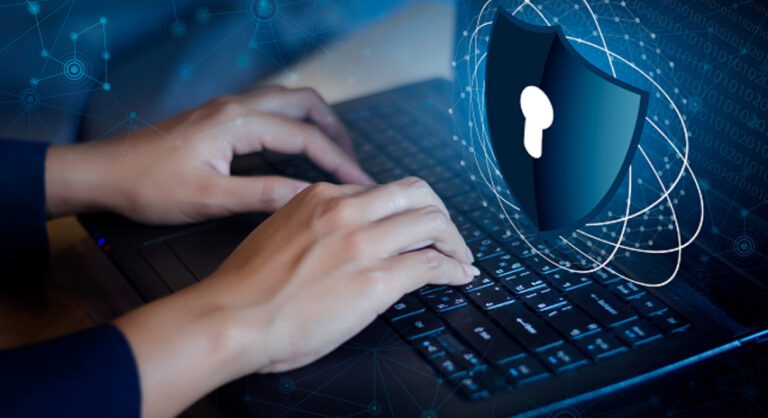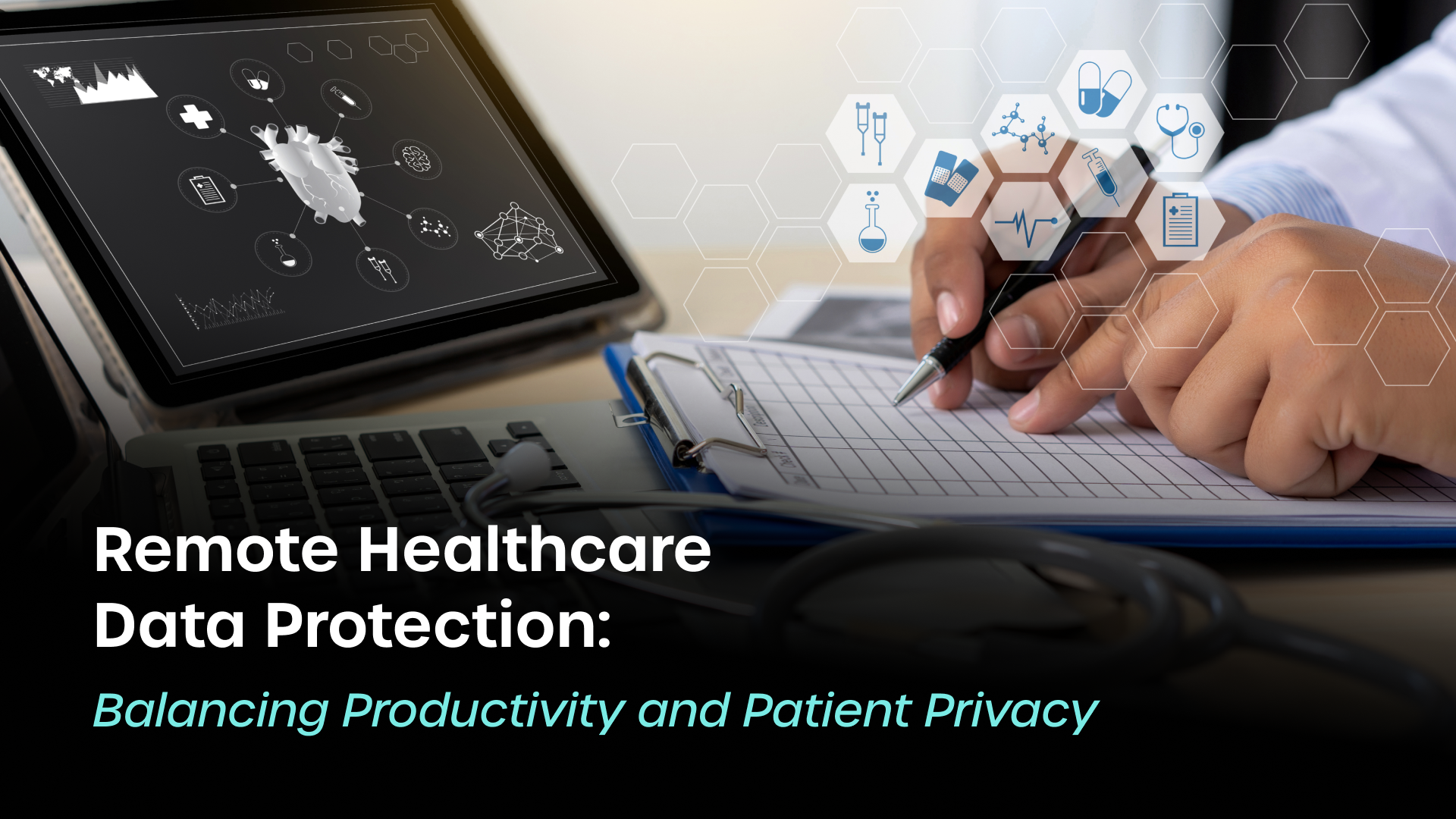
Remote Healthcare Data Protection: Balancing Productivity and Patient Privacy
- Rajnish Kumar
- 6 Mins

Summary
In today’s telehealth-driven world, remote healthcare data protection is more important than ever. Patient records, lab reports, and insurance information are highly sensitive.
In today’s telehealth-driven world, remote healthcare data protection is more important than ever. Patient records, lab reports, and insurance information are highly sensitive. With healthcare professionals increasingly working remotely, organizations cannot rely on traditional security measures alone. That’s why enhanced Data Loss Prevention (eDLP) has become essential — it goes beyond standard protections to actively prevent data leaks and ensure compliance.
Implementing eDLP helps maintain patient privacy in telehealth while allowing staff to work efficiently from anywhere. It provides real-time monitoring, policy enforcement, and robust reporting, making it the cornerstone of secure remote healthcare operations.
Why Remote Work Increases Risks in Healthcare
Remote work offers flexibility but introduces several new challenges for healthcare data security:
- Multiple Access Points: Doctors, nurses, and administrative staff access patient records from laptops, tablets, or personal devices.
- Unsecured Networks: Home Wi-Fi or public networks can be vulnerable to hacking or interception.
- Cloud Collaboration: Telehealth sessions, emails, and file-sharing platforms create more opportunities for accidental data exposure.
- Human Error: Mistakes like sending patient records to the wrong recipient can happen, even with well-trained staff.
Without proactive protections, sensitive patient data can be exposed, leading to compliance violations, legal penalties, and loss of trust. This is where eDLP solutions step in.
What eDLP Does Differently
While traditional DLP tools often alert IT teams after a potential breach, enhanced DLP (eDLP) takes a proactive approach:
- Real-Time Blocking of Risky Actions
eDLP can prevent unauthorized sharing of patient data, stopping breaches before they happen. - Advanced Monitoring of Applications and Devices
It tracks all activity on remote devices, ensuring that sensitive information is accessed only through approved channels. - Policy Enforcement
Security rules are applied automatically, reducing reliance on manual monitoring and ensuring patient privacy in telehealth. - Audit-Ready Logs
Every action is recorded and time-stamped, simplifying compliance reporting and regulatory audits.
By implementing eDLP, healthcare organizations can maintain a strong defense against both human error and external threats while supporting secure remote work.
Benefits of eDLP for Remote Healthcare Teams
Healthcare providers that adopt eDLP experience multiple advantages:
- Stronger Data Protection: Sensitive patient information is safeguarded from leaks or accidental exposure.
- Regulatory Compliance: HIPAA and other regulations are easier to meet with real-time monitoring and automated reporting.
- Remote Workforce Protection: Staff can work from home or other locations without risking data security.
- Operational Confidence: IT and compliance teams can focus on strategic initiatives rather than firefighting breaches.
- Patient Trust: Patients feel secure knowing their data is protected, even in telehealth environments.
How eDLP Supports Productivity Without Sacrificing Security
Some healthcare leaders worry that strong security measures might slow down staff. However, eDLP is designed to protect data without creating friction:
- Policies are applied automatically, so staff don’t have to manually check compliance.
- Secure workflows ensure that telehealth sessions and collaboration tools remain efficient.
- Real-time alerts allow IT teams to address potential issues quickly without disrupting clinicians’ work.
This balance ensures healthcare teams remain productive while remote healthcare data protection stays uncompromised.
Implementing eDLP in Healthcare Organizations
A successful eDLP strategy includes several steps:
- Risk Assessment
Identify where sensitive patient data resides, who accesses it, and how it moves across systems. - Selecting the Right eDLP Tool
Look for solutions that integrate with telehealth platforms, EHR systems, and cloud applications. - Staff Training
Employees should understand how eDLP works and why following security policies is essential. - Continuous Monitoring and Policy Updates
Threats evolve constantly. Regularly update policies and review logs to maintain maximum protection. - Integration With Compliance Frameworks
Ensure eDLP aligns with HIPAA, GDPR, or other regulatory requirements relevant to your organization.
Real-World Impact
Organizations that implement eDLP report measurable benefits:
- Reduction in accidental data leaks
- Faster, simpler audit preparation
- Improved confidence among remote staff
- Stronger patient trust in telehealth services
By making eDLP a central part of remote healthcare data protection, healthcare providers create a secure environment that supports both staff and patients.
Conclusion
As telehealth and remote work continue to expand, healthcare organizations cannot afford to rely on basic security measures. Enhanced Data Loss Prevention (eDLP) provides proactive, real-time protection that safeguards sensitive information, ensures regulatory compliance, and maintains patient privacy in telehealth.
Investing in eDLP solutions allows healthcare teams to work remotely with confidence, knowing that patient data is protected and operational workflows remain smooth. Strong remote healthcare data protection isn’t just a technology choice — it’s a commitment to patients, staff, and compliance.
1. What is RemoteDesk?
2. How does RemoteDesk ensure compliance with regulations like PHI, HIPAA & PCI DSS?
3. Can RemoteDesk integrate with our existing security and productivity tools?
4. How does RemoteDesk handle remote and hybrid workforce management?
5. What types of analytics and reporting does RemoteDesk offer?
Get Started Today
Sign up in minutes. Secure your remote
workforce with confidence.
See how RemoteDesk makes compliance and data protection effortless.




